Recent Articles
Popular Makes
Body Types
2017 Ford Escape vs 2017 Ford Edge: Which is for you?
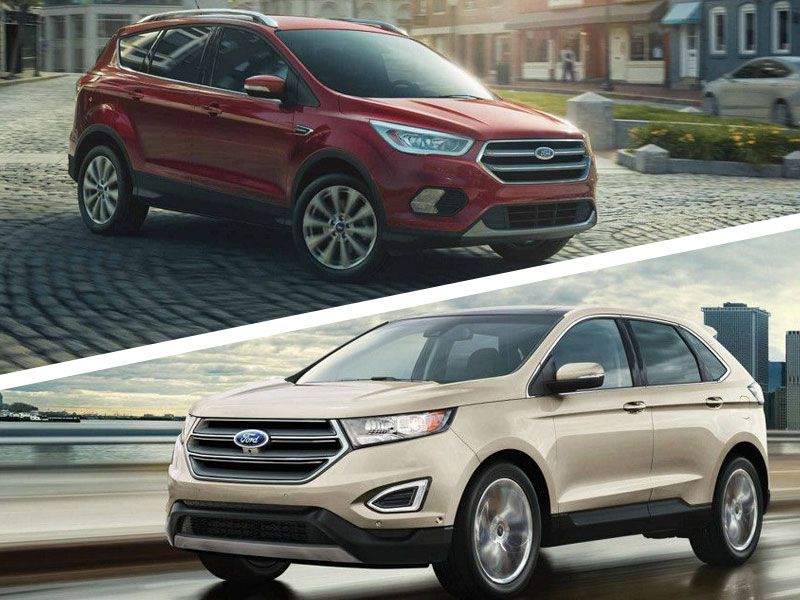
Ford Escape vs Ford Edge ・ Photo by Ford
The 2017 Ford Escape and 2017 Ford Edge are both five-seat crossovers with relatively affordable prices. It may seem mystifying that Ford offers two such similar vehicles, but crossovers are a hot property and although the Escape and Edge are similar, they’re not the same. Pricing for both starts at under $30,000, but trims and features vary between the two, with the Edge being both a little bigger, fancier and more expensive. Let’s take a closer look at the differences between the Escape and the Edge.
Pricing and Trim Levels
Pricing on the Escape comes in low at $23,750 and stays that way throughout the model range. You have your choice of S, SE and Titanium trims with that top trim starting at only $29,250. Ford uses the Titanium badge only on well-equipped models, so you’re getting a lot of features at a great price.
The Edge starts at $28,950 with four trim levels — SE, SEL, Titanium and Sport — the top Sport starting at $40,400. The Titanium is once again the top trim if you’re looking for a luxury vibe. The Sport boasts many of the same features, but with the addition of a sporty exterior appearance package and a more powerful engine.
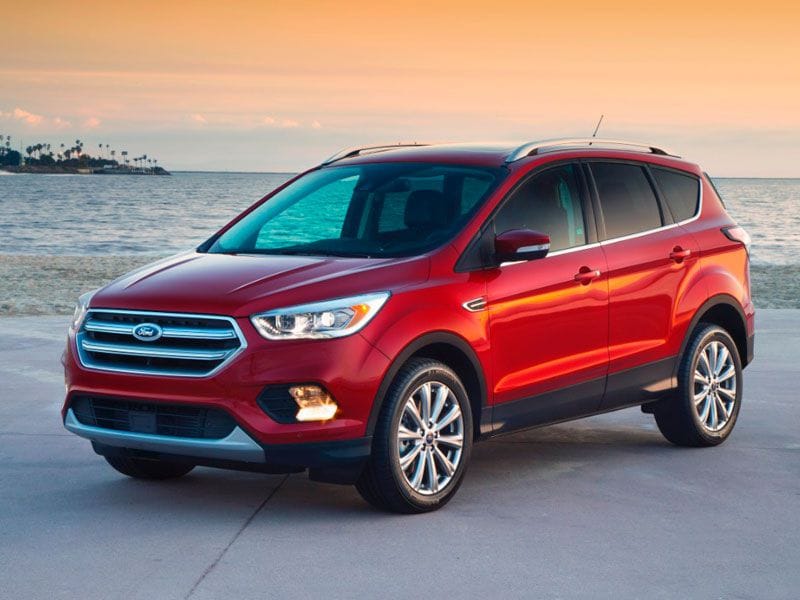
Photo by Ford
Options
The base Escape S has only one engine choice and front-wheel drive, while the SE and Titanium have a choice between two other engines and available four-wheel drive. The SE adds options for leather-trimmed seats, upgraded audio and the SYNC 3 infotainment system. The Titanium expands the options to include a heated steering wheel and enhanced parking assist.
The base Edge SE has a four-cylinder engine while SEL and Titanium trims have an available V6 and the Sport gets another V6 with more power. SEL options include heated front seats, SYNC 3 and remote start, while the Titanium adds optional heated rear seats and adaptive cruise control with collision warning and braking. The Sport adds a unique exterior appearance package.
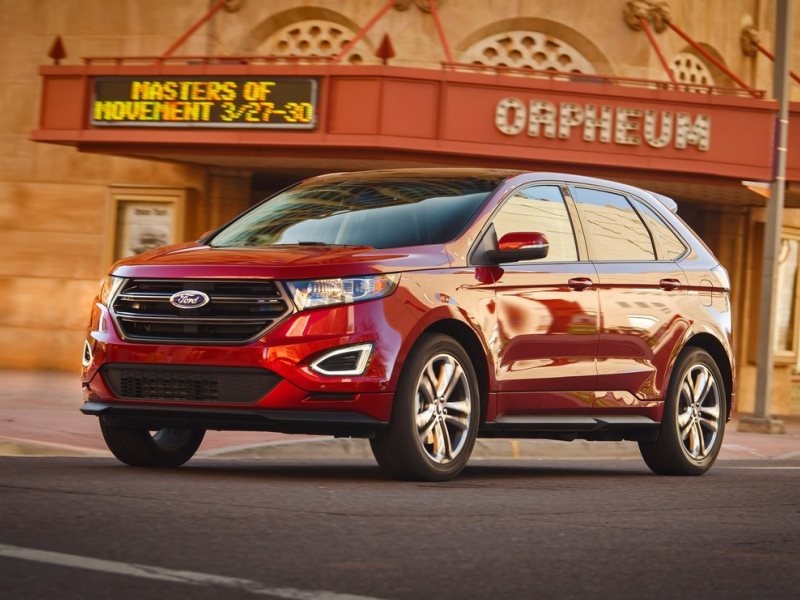
Photo by Ford
Powertrains
The Escape offers three powertrain choices. The base S has only a 2.5-liter four-cylinder engine that produces 168 horsepower. The SE and Titanium have a standard 1.5-liter four-cylinder with 179 horsepower or an available 245-horsepower 2.0-liter, both with Ford's "EcoBoost" turbochargers. You gain all of 1 mpg with that smaller engine.
The base engine on the Edge is the same 2.0-liter four-cylinder available on the Escape. The optional engine here is a 3.5-liter V6 with 280 horsepower, but the Sport offers even more: Its standard engine is a 2.7-liter V6 with 315 horsepower. All Escape and Edge models come paired to a six-speed automatic transmission.
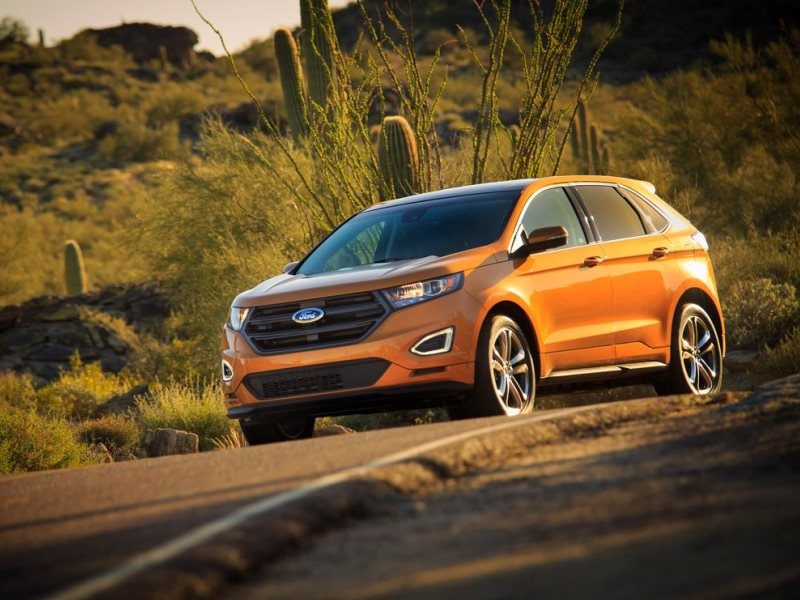
Photo by Ford
Standout Features
Since these are two Ford products, there’s a lot that’s the same in both cars, but there are standout features in each model. The Escape has better fuel efficiency, up to 30 mpg on the highway with the 1.5-liter engine and overall good gas mileage across the lineup. It also includes a standard mini spare tire and brake assist.
The Edge Sport offers a more performance-focused drive with the best horsepower of the lot and sporty styling to match. The Edge also has a more luxurious top trim with optional features like heated and cooled front seats and heated rear seats, and optional safety features like lane-keeping assist and blind-spot monitoring with cross-traffic alert.
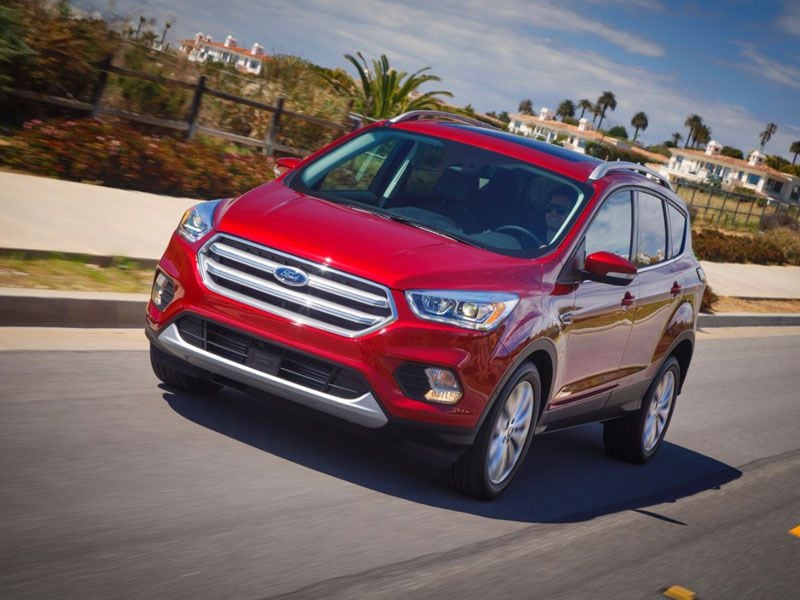
Photo by Ford
Exterior Design
Once again, with two Ford products these are crossovers with similar design cues. Still, there are differences between the models that definitely tailor their appeal to a specific buyer. The Edge offers HID headlamps and solar tinted glass for a more upscale look. It also offers the Sport model with a unique trapezoidal integrated fascia, body-color lower body cladding, and special front and rear lower fascias.
The Escape doesn’t offer a sporty trim like the Edge and has fewer options. There is a choice of black or gloss black grilles, non-configurable daytime running lamps and dual chrome exhaust tips. It does offer molded-in skid plates front and rear, which aren’t offered on the Edge at all.
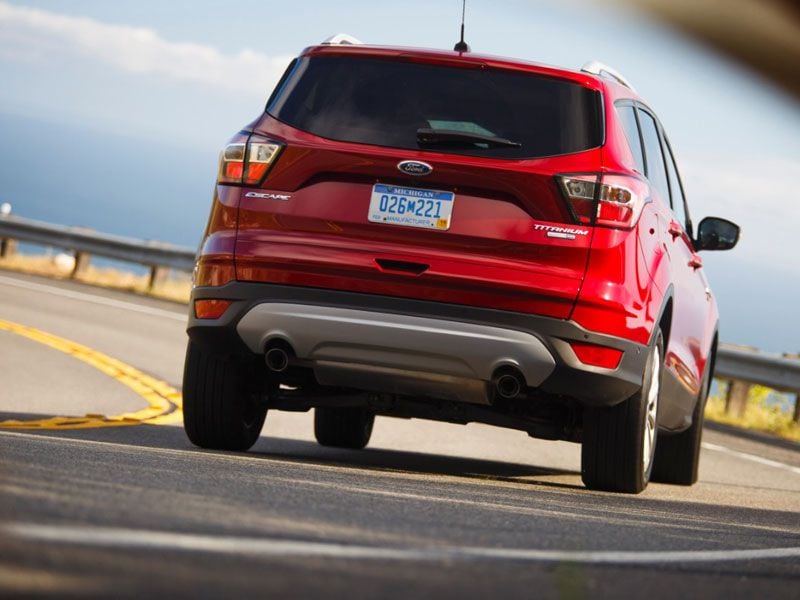
Photo by Ford
Interior Design
With its higher starting price, the Edge has a nicer interior even in the base model than the Escape. There are reclining front bucket seats across the range with the option to make them heated and cooled. Even rear passengers have the option for heated seats in the Edge's Titanium trim. The second-row EasyFold seat makes for a quick switch to accommodate cargo.
The Escape does offer power seats with leather trims, but there is no option at any trim to have heated rear seats or cooled seats anywhere you choose to sit. A leather-wrapped shift knob and steering wheel are optional and the rear seats split-fold 60/40, but they don't feature the quick release system found in the Edge.
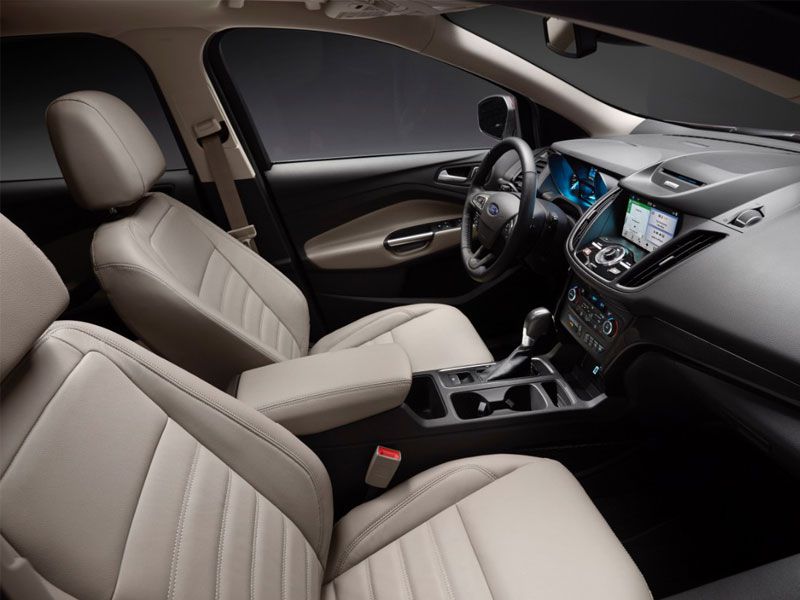
Photo by Ford
Cargo Capacity
While there are many similarities between the Edge and the Escape that make them hard to differentiate, when it comes to cargo capacity the larger Edge is the clear winner. The Edge has a total of 73.4 cubic feet behind front seats and 39.2 feet behind the second row, while the Escape has 68 cubic feet behind the front seats and 34.0 cubic feet behind the second row.
The Edge also one-ups the Escape with its second-row EasyFold seat. Rather than forcing you to come around the rear doors to fold the seats manually and then go back to the tailgate to load cargo, EasyFold does the job at the touch of a button located in the cargo area.
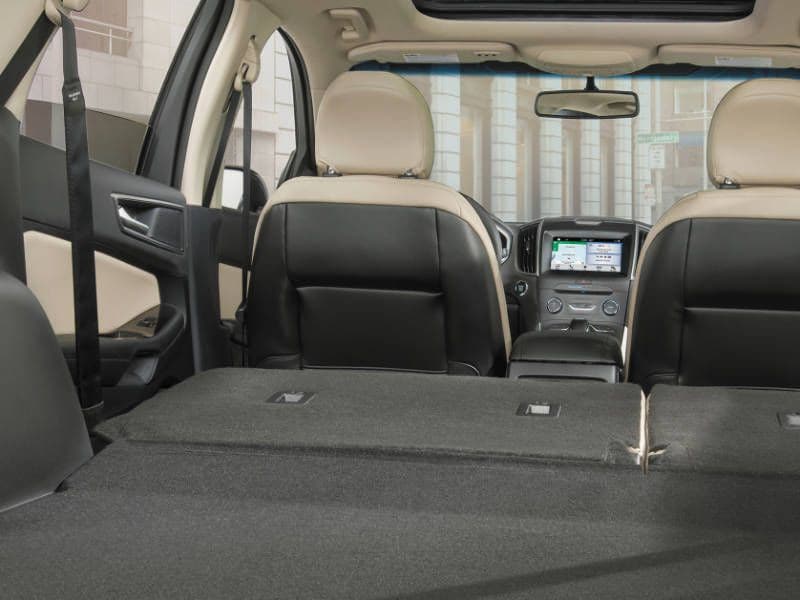
Photo by Ford
Safety Ratings and Technology
Both the Escape and Edge received a score of Good in all Insurance Institute for Highway Safety crash tests except for the small-overlap front, in which both received the second-highest Acceptable rating. In headlight performance, the Escape scored Acceptable while the Edge was the lowest Poor. The Edge, however, scored better in the design of its LATCH system, which received an Acceptable rating versus a Marginal for the Escape.
The Edge also has more safety features than the Escape, including an especially rare feature: available inflatable rear safety belts for the second-row outboard seats to give those passengers extra protection.
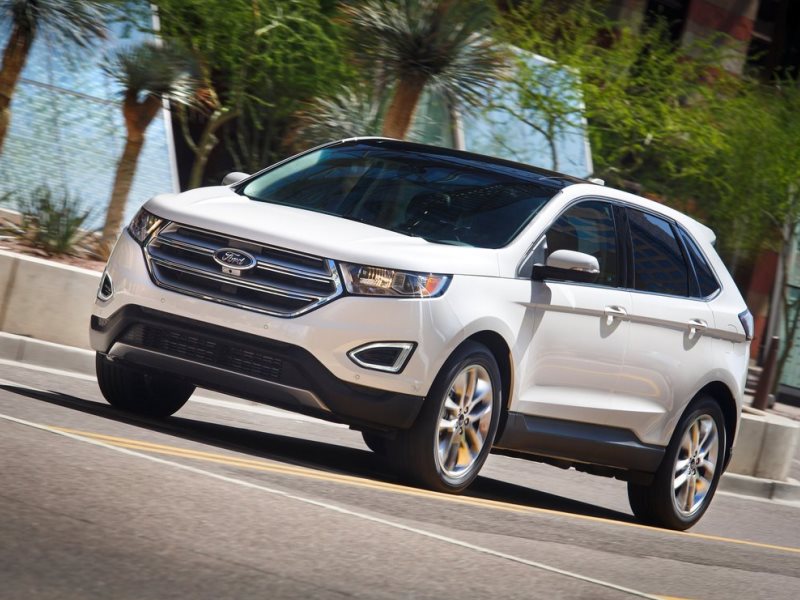
Photo by Ford
Driving Experience
Driving a crossover isn’t like driving a sports car, but that doesn’t mean it has to be dull. Both the Edge and Escape have a variety of engine choices so you can either go for something less powerful and less costly or step up to something more spirited.
The Escape doesn’t offer quite the same drive experience in terms of power, but both are comfortable and smooth with plenty of room for a family and its stuff. Where the Edge shines for performance fans is that Sport trim. It has loads of power that make it truly fun to drive and styling that keeps it from looking like just another crossover in the carpool line at school.
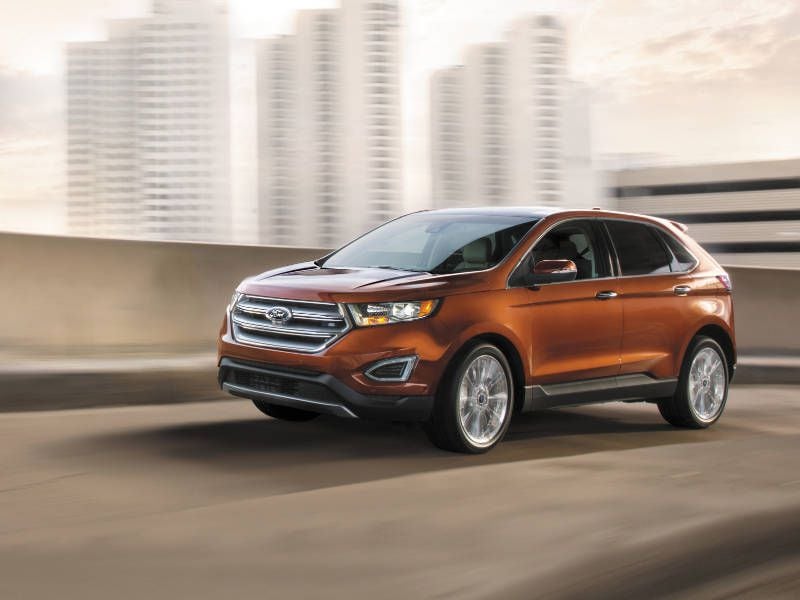
Photo by Ford
Which is Best?
Both the Edge and Escape are solid choices, and you won’t go wrong with either if you need a fuel-efficient, versatile crossover. Which is right for you comes down to personal preference, but there are fundamental differences that might push you toward one over the other.
The Escape is better if you’re on a tight budget, as even the highest trim starts below $30,000 with lots of features. But the Edge takes wins if you want a more powerful engine and put a higher priority on cargo space. It also offers more interior amenities, but they come at a price that might put it over your budget. We recommend taking both for a test drive before you make your decision.

Photo by Ford